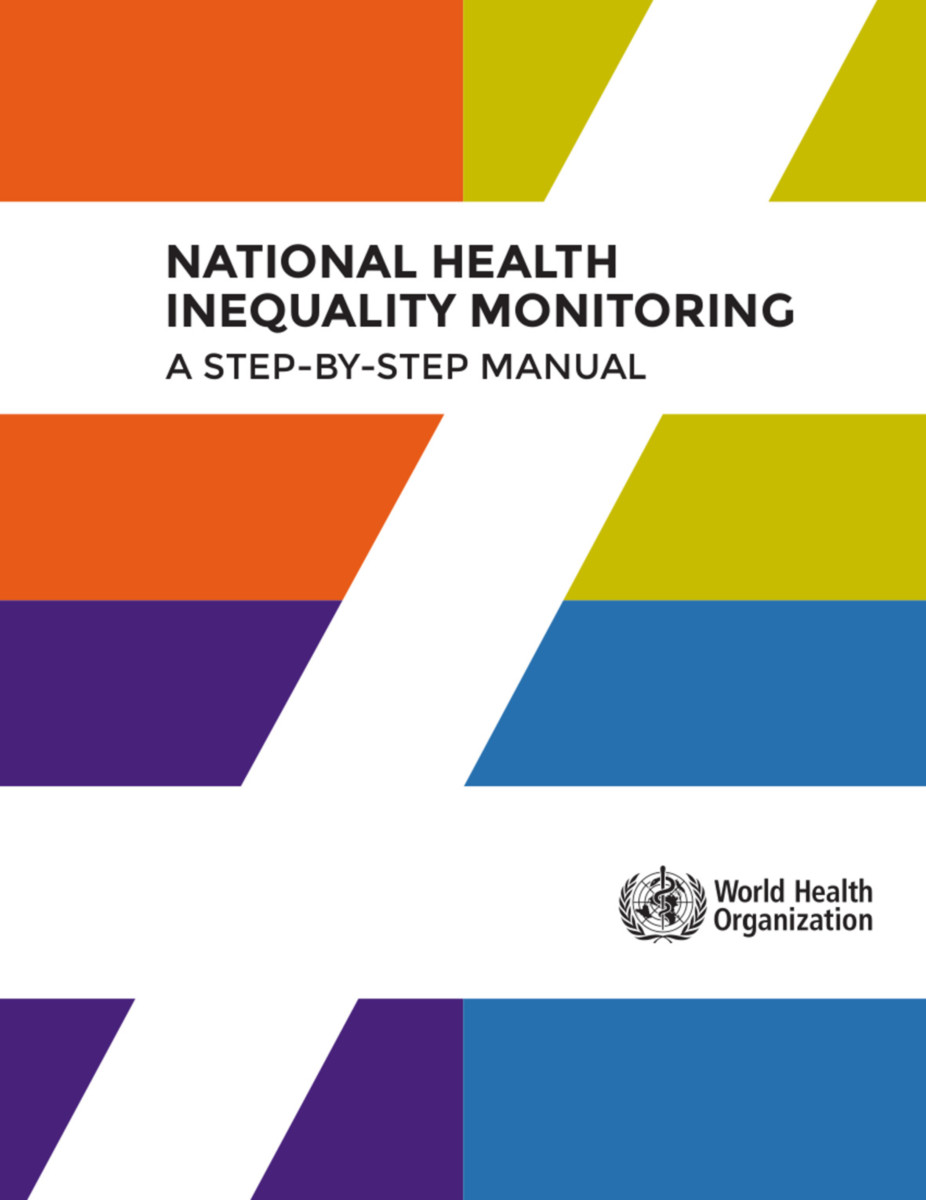National Health Inequality Monitoring
A Step-by-Step Manual
- Publisher
World Health Organization - Published
15th June 2017 - ISBN 9789241512183
- Language English
- Pages 60 pp.
- Size 8.25" x 11.75"
The National Health Inequality Monitoring: A Step-by-Step Manual was designed to serve as a highly accessible, practical reference for the practice of health inequality monitoring. Organized according to a flow chart, the manual helps readers to anticipate and navigate practical considerations that underlie health inequality monitoring.
The overarching goals of the manual are:
- to assist with the establishment of health inequality monitoring systems in countries where it is not currently conducted;
- to strengthen this practice in countries where it is conducted; and
- to encourage all countries to integrate regular health inequality monitoring into their national health information systems.
Through this resource, we aim to strengthen capacity for health inequality monitoring across settings with varied priorities, capabilities, resources, and/or data availability. Further, we hope that this manual will foster regular reporting of inequalities in diverse health topics and encourage greater integration of the results of health inequality monitoring within policies, programs, and practices.
Following a brief introduction to health inequality monitoring, the manual is organized around four main sections, each devoted to one step of health inequality monitoring. The steps form the basis of a flow chart for the practice of health inequality monitoring. In each of the four sections, an expanded version of the flow chart (which is included in full at the end of the manual) displays sub-steps, key questions, and itemized checklists of data requirements, analysis/reporting activities, and/or decision points. The fifth step, which covers how to implement changes based on the results of health inequality monitoring, is addressed in the section "Health inequality monitoring: a brief overview."
Guidance is provided through brief, practical texts, and, where applicable, sample templates. In addition, the manual outlines pertinent examples and resources at each step with recommended references for more in-depth exploration of issues related to health inequality monitoring. A glossary provides a quick reference for key terminology encountered throughout the manual.
World Health Organization
World Health Organization is a Specialized Agency of the United Nations, charged to act as the world's directing and coordinating authority on questions of human health. It is responsible for providing leadership on global health matters, shaping the health research agenda, setting norms and standards, articulating evidence-based policy options, providing technical support to countries, and monitoring and assessing health trends.


